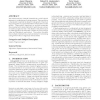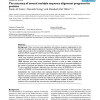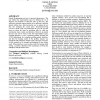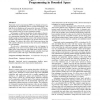62 search results - page 6 / 13 » Homology gives size control in genetic programming |
GECCO
2004
Springer
14 years 1 months ago
2004
Springer
Abstract. Bloat control is an important aspect of evolutionary computation methods, such as genetic programming, which must deal with genomes of arbitrary size. We introduce three ...
GECCO
2005
Springer
14 years 1 months ago
2005
Springer
The authors employ multiple crossovers as a novel natural extension to crossovers as a mixing operator. They use this as a framework to explore the ideas of code growth. Empirical...
BMCBI
2006
13 years 7 months ago
2006
Background: There have been many algorithms and software programs implemented for the inference of multiple sequence alignments of protein and DNA sequences. The "true" ...
GECCO
2007
Springer
14 years 1 months ago
2007
Springer
Genetic Programming uses trees to represent chromosomes. The user defines the representation space by defining the set of functions and terminals to label the nodes in the trees. ...
POPL
2012
ACM
12 years 3 months ago
2012
ACM
Functional reactive programming (FRP) is an elegant and successful approach to programming reactive systems declaratively. The high levels of abstraction and expressivity that mak...




